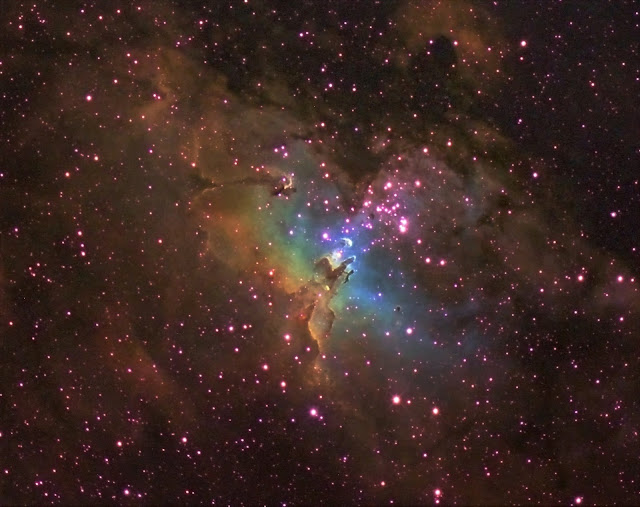Click on an image to get a closer view.
This is a single, 60s sub-frame of M16 rising above the rooftop. The camera was set on 2 times bin mode to increase the sensitivity of the camera.
This image of M16 is a composition of R,G,B colour data with narrowband luminance data
I was using my 80mm refractor at f/6.3, a Vixen Atlux mount and an Atik 383L mono CCD camera. The data for this image were captured on three seperate evenings. On the first evening I captured 5-minute subframes with matching dark-frames and combined them with flat fields with the camera set to times one bin mode. I captured three sub-frames for each narrowband filter SII, OIII and H-alpha.
On the second evening I set the camera to times two bin mode to increase the sensitivity of the camera using a H-alpha filter for luminance.
On the third evening I captured 30 minutes using a SII filter, and 25 minutes using a OIII filter using 60s sub-frames.
This image is a composition of data taken from three different telescopes, a 10" reflector, a 4 " refractor, and an 80mm refractor.
This is an image of M16 taken with a 10" reflector with colour data obtained with an 80mm refractor








